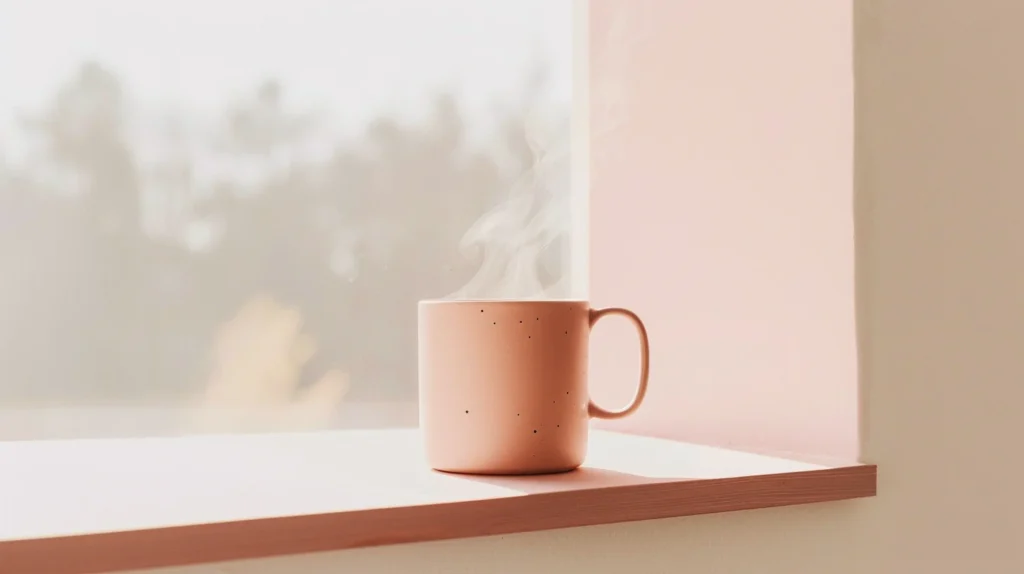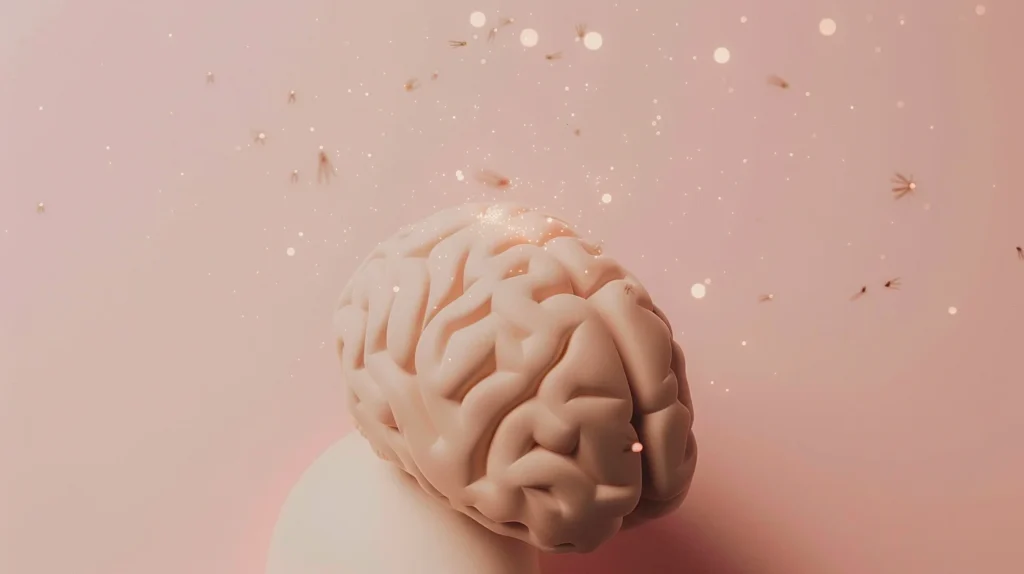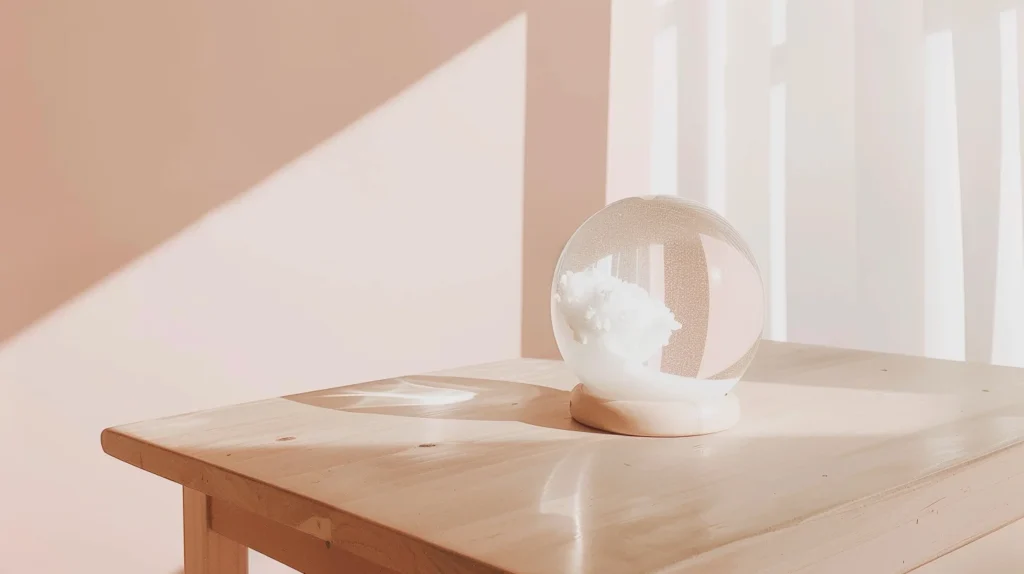
You may be holding an ordinary mug right now, inhaling the comforting aroma of tea. Now pause for a second and consider this: somewhere between 5.1 and 5.6 million Americans living with major depressive disorder have tried every standard medication in the book and still wake up each morning under a grey mental sky. According to the Emory University, that is the number of individuals who could qualify for psilocybin-assisted therapy if it were broadly available today. When I first read that figure, I had to put my own mug down – because it tells two simultaneous stories. The first is a story of quiet suffering on a national scale. The second, however, is a story of possibility: millions stand to benefit once science, regulation, and responsible clinical practice align.
I think that a single data point can feel abstract until it is anchored in a lived experience. Every week at Field Trip Health I meet people who mirror that large statistic in miniature form: you may have navigated years of selective serotonin re-uptake inhibitors, cognitive-behavioural therapy appointments, mindfulness apps, and perhaps even electroconvulsive therapy, only to find your symptoms lingering like fog. You have done the “right things,” yet genuine relief remains elusive. That persistent gap between effort and outcome is exactly why I spend my research hours investigating new molecules and my clinical hours guiding clients through evidence-based psychedelic medicine.
A surge of interest isn’t limited to professionals. A 2022 survey found that 65 percent of Americans contending with mental-health conditions actively want legal access to psychedelics such as psilocybin. As reported by Forbes, this surge tells me people are hungry for solutions that go beyond the familiar pharmacy shelf.
So let’s talk about psilocybin tea. Specifically, what rigorous science suggests about its potential, how it works in the brain, where safety boundaries lie, and why preparation and integration are just as important as the psychedelic session itself.
What Is Psilocybin and Why Do Clinicians Serve It as Tea?
You might know psilocybin colloquially as “magic-mushroom compound,” but the journey from fungi to therapeutic agent is more sophisticated than picking a cap in the woods. Psilocybin is a pro-drug converted by the liver into psilocin, the metabolite that interacts mainly with serotonin 2A receptors in your brain. The resulting cascade temporarily disrupts rigid patterns of connectivity, allowing new pathways of thought and emotion to emerge.
Now, why a warm infusion rather than a dried cap swallowed whole? There are three clinically compelling reasons, and each has direct implications for your comfort and safety.
- First, dosage accuracy improves when ground mushroom material is steeped in a precise volume of hot water and then filtered. You eliminate the natural variability in mushroom size and density.
- Second, tea greatly reduces the fibrous chitin content that can irritate your stomach.
- Third, liquid formulations are absorbed more quickly, meaning you reach the therapeutic plateau within thirty minutes rather than the forty-five or sixty minutes typical of capsules.
A faster, predictable onset helps clinical teams coordinate breathwork prompts, music timing, and safety monitoring. Brewing psilocybin at home remains illegal in Canada and most jurisdictions, so every reference you find in this article – whether my own clinical anecdotes or data from colleagues – assumes a legalized research or medical context.
Psilocybin History: From the First Psychedelic Wave to Today’s Renaissance
If you trace the modern scientific timeline, you will notice two distinct surges of curiosity. The first wave spanned roughly 1950 to 1970, when early investigations hinted that psilocybin could ease depression and alcohol dependence. Social backlash and restrictive policies then pressed pause for nearly three decades.
Fast-forward to the year 2000, and you see a second wave driven by tighter protocols and brain-imaging technology that our predecessors could scarcely imagine. Johns Hopkins researchers published landmark data showing rapid antidepressant effects after a single psilocybin session. Subsequent trials at NYU and Imperial College London extended those findings to existential anxiety in cancer patients. Each successive study sharpened our understanding, leading to the present moment in which multiple Phase III trials are either recruiting or about to launch.
Canada has taken an especially proactive stance. At Field Trip Health, we are preparing a 960-person clinical study that will test psilocybin-assisted group therapy across five cities in the second half of 2025.
How Psilocybin Affects Your Brain

A naturally derived psychedelic, psilocybin has demonstrated the ability to alter brain function in a number of key areas:
1. Quieting the Over-Talkative Default Mode Network.
If you have ever caught your inner critic replaying the same disappointment on loop, you have felt the Default Mode Network – often abbreviated as DMN – at work. This interconnected set of brain regions specializes in weaving your personal narrative, frequently revisiting memories, intentions, and regrets. While this storytelling function is essential for self-reflection, research shows that in depression, the DMN can become excessively active, reinforcing negative thought cycles and rumination.
Functional MRI studies have demonstrated that psilocybin temporarily down-regulates this network, interrupting the relentless self-talk. Many clients describe this experience as entering a state of “mental breathing room,” where they can finally step back from their inner narrator and observe thoughts with greater clarity and compassion.
2. Opening Windows of Neuroplasticity.
While the DMN quiets, other neural regions start chatting like guests at a suddenly lively dinner party. This surge in activity – what neuroscientists refer to as increased signal diversity – suggests that the brain is temporarily liberated from its usual rigid circuits.
Compelling studies reveal that within just a few hours of psilocybin exposure, there is a marked increase in dendritic spine density – these tiny protrusions are essential for forming new synapses and facilitating communication between neurons. Simultaneously, human EEG studies have documented an increase in neural network diversity.
In practical terms, this means your brain enters a state of heightened plasticity, becoming more adaptable and open to change for a short, critical window. This is precisely why the days following a psychedelic experience are so valuable for integration therapy: during this fleeting period, new insights have a unique chance to be anchored and transformed into lasting habits and healthier patterns of thinking.
3. Softening Fear Responses.
Trauma survivors often live in a heightened state of amygdala vigilance, perpetually scanning their surroundings for threats – even in environments that are objectively safe. This persistent sense of alarm is a hallmark of post-traumatic stress and can make daily life exhausting.
Recent fMRI research demonstrates that, during psilocybin-assisted sessions, amygdala reactivity is significantly reduced and this reduction correlates with enhanced positive mood in healthy volunteers. This neurobiological shift allows individuals to approach and revisit distressing memories with a newfound sense of emotional safety, rather than being overwhelmed or retraumatized by them. It mirrors what I’ve repeatedly witnessed in my own clinical work with ketamine-assisted psychotherapy for PTSD: both molecules seem to create a more compassionate, less reactive space in which fear can be engaged and processed constructively.
Psilocybin Tea Versus Other Delivery Methods: A Clinical Comparison
You may wonder whether a table of onset times and peak durations is merely academic. In fact, I’d argue that these pharmacokinetic details define how your therapy unfolds in real life.
When you drink psilocybin tea, you typically notice perceptual shifts after fifteen to thirty minutes. That brisk ramp-up lets your therapist synchronize breathing cues, music, and verbal check-ins while you are still coherent enough to respond.
Capsules often take closer to forty-five minutes, which can prolong anticipatory anxiety.
Intravenous or intramuscular psilocin hits full intensity within five minutes, and although that route offers unmatched dose control, the sudden launch can be overwhelming, particularly for first-timers.
From a clinician’s perspective, I know that for group formats – where the timing of shared emotional breakthroughs can shape the entire session – tea’s reliable onset and gradual climb offer a rare harmony: brisk enough to synchronize peak experiences, but measured enough to avoid overwhelming participants. The ritual of sipping tea, hands wrapped around a warm mug, sets the tone for a session that feels approachable and communal. You aren’t launched abruptly into the unknown. Rather, you ascend gently with your peers, as if sharing an elevator ride to a higher floor of insight together.
What the Evidence Says About Mental-Health Outcomes
As someone who practices at the intersection of clinical care and research, I’ve watched with cautious optimism as the evidence for psychedelic-assisted therapy matures. To help you navigate this evolving field, I distill the latest findings from high-quality studies, focusing on measurable outcomes.
Depression

A 2022 meta-analysis – drawing on data from nine randomized controlled trials involving a total of 436 participants – demonstrated that psilocybin treatment led to striking reductions in depressive symptoms, many of which became apparent within just one week post-intervention. Notably, these improvements were not fleeting: when integration therapy was included, the benefits persisted for as long as three months. To put the magnitude of these effects in perspective, the reported effect size (Hedges’ g = 1.23) not only matches but often surpasses what we typically see with conventional antidepressants, which usually fall between 0.3 and 0.5. Moreover, these changes occur much more rapidly than with standard treatments.
Moreover, a rigorously conducted randomized trial with 104 participants showed that a single 25-milligram dose of psilocybin led to a 12.3-point reduction in MADRS scores at day 43 compared to placebo. This drop is clinically significant – often moving individuals from severe to moderate or even moderate to mild depression, as measured by the same rating scale most psychiatrists use in everyday practice.
Anxiety and Existential Distress
Cancer patients often face a complex interplay of depression, deep-seated fear, and a pervasive sense of lost meaning – a psychological landscape that can feel overwhelming and isolating. A systematic review examining four studies, totaling 117 participants, found that psychedelic-assisted interventions yielded effect sizes for anxiety reduction between 1.16 and 1.47.
Within the clinical research community, such effect sizes are far from subtle. They signal a profound, almost seismic reduction in psychological distress, offering a degree of relief that has the potential to meaningfully shift the entire emotional experience for these patients.
PTSD
While we await larger, rigorously controlled PTSD trials, the current open-label evidence is promising. In one pilot study, psilocybin-assisted group therapy for 18 long-term AIDS survivors resulted in a 9-point reduction on the PCL-5, indicating a significant drop in PTSD symptoms. These medium to large effect sizes speak to the potential of psychedelic therapies to deliver meaningful clinical benefit even for populations grappling with chronic trauma.
In my clinical experience, ketamine is often the initial agent driving fear-extinction; psilocybin may soon broaden our toolkit, offering hope to those who either do not tolerate or do not achieve adequate symptom relief with ketamine.
Substance-Use Disorders
You might be surprised to learn that psychedelics are being explored for addiction, but preliminary data justify the interest.
A pilot study at Johns Hopkins University looked at 15 people trying to quit smoking. They took part in a program that used psilocybin along with cognitive behavioral therapy (CBT). The plan included two to three psilocybin sessions: one moderate dose in the fifth week and a higher dose about two weeks later. Participants also joined four weekly meetings that used CBT, mindfulness, and guided imagery to help them stop smoking. After 12 months, 67% had quit smoking, and 60% were still smoke-free at around 30 months.
Most said their psilocybin sessions were among the most meaningful and spiritual experiences of their lives. These results suggest that psilocybin combined with CBT may help people quit smoking long-term. Still, because the study was small and open-label, more research is needed.
Safety First: Screening, Exclusions, and Monitoring
You deserve an open, honest discussion about risks. While psilocybin is considered physiologically gentle compared to many conventional psychiatric medications – meaning it typically lacks the organ toxicity or severe withdrawal issues seen with some drugs – this does not make it universally safe for everyone.
Cardiovascular effects, for example, may include transient, sometimes significant increases in blood pressure and heart rate; for individuals with uncontrolled hypertension, this can present real dangers, making stabilization of blood pressure an essential prerequisite for participation.
Those with personal or family histories of schizophrenia or bipolar I disorder are at heightened risk for psychiatric destabilization or triggering latent symptoms, and are therefore carefully screened out of reputable treatment programs.
Medication interactions are another crucial consideration: certain drugs, particularly monoamine oxidase inhibitors (MAOIs) and some selective serotonin reuptake inhibitors (SSRIs), can either dampen or dangerously amplify psilocybin’s effects.
Never discontinue your psychiatric medications abruptly; any changes must be coordinated closely with your prescribing physician to ensure your safety and well-being throughout the process.
Exploring Group-Based Psilocybin Research
Traditional therapy often takes place one-on-one, but researchers are increasingly interested in group-based models. Early evidence suggests that shared experiences in a safe, guided environment may help participants feel less isolated and deepen personal insights.
Future Research Directions
Field Trip Health is working with partners to design a large-scale clinical trial that, if approved by regulators and ethics boards, would explore psilocybin-assisted therapy in a group format. The proposed structure would include preparation sessions, a single group dosing day, and follow-up integration meetings. Because psilocybin has a relatively consistent duration of action, group sessions could allow facilitators to guide participants through a synchronized experience using music, breathwork, and collective reflection.
Commitment to Safety and Accessibility
Health Canada’s Special Access Program remains the only current pathway for physicians to request psilocybin for individual patients. Our research efforts are intended to responsibly contribute to the scientific understanding of psychedelic therapies and explore approaches that might one day improve accessibility. If approved, studies would be medically supervised and carefully designed to ensure participant safety.
Where Ketamine Fits Into the Broader Psychedelic Toolkit

Until psilocybin secures routine regulatory clearance, ketamine remains the most accessible psychedelic molecule in North America. Field Trip Health’s ketamine-assisted psychotherapy program already embodies the principles we will apply to psilocybin: spa-inspired suites, physician oversight, and mandatory integration. Additionally, clients can access advanced interventions such as Dual Sympathetic Reset and repetitive transcranial magnetic stimulation (tRMS) when a multi-modal approach is warranted.
Many people ask whether they should wait for psilocybin or start with ketamine. In my experience, the answer hinges on urgency and individual medical profile. Ketamine acts within hours; for someone in crisis, that speed can be lifesaving. Psilocybin may offer deeper autobiographical insight but remains bound by tighter legal channels. The two are not mutually exclusive. They are complementary tools in a growing therapeutic chest.
Psilocybin: A Research and Regulatory Timeline
Regulatory environments evolve incrementally, rarely in sweeping leaps. Drawing from the latest clinical trial data and policy trends that I monitor closely, I anticipate a gradual but accelerating momentum over the next few years.
By 2025, we should see several large-scale Phase III trials on psilocybin for depression deliver pivotal results. These outcomes will likely prompt Health Canada to seriously evaluate a controlled, medically supervised access framework – potentially as early as 2026 or 2027.
Should such regulatory progress materialize, we may envision a reality by 2030 where integrated mental health clinics routinely offer a full spectrum of therapies: ketamine, psilocybin, MDMA, rTMS, and autonomic nervous system interventions. Each treatment would be carefully tailored to your unique neurobiological profile and personal history, reflecting a new standard in precision mental healthcare.
Practical Guidance If You Are Considering Psilocybin Therapy
Ground your decision in evidence rather than excitement. Meta-analyses and randomized trials consistently show large effect sizes for depression and anxiety, yet psilocybin remains a tool, not a panacea.
Second, insist on comprehensive medical screening – even if you feel physically healthy – to uncover any silent contraindications.
Third, take integration seriously; journaling, therapy, and community connection transform fleeting insights into daily practices.
Fourth, do not underestimate the power of the environment. A calm, aesthetically pleasing clinic lowers your anxiety from the moment you walk in, setting the stage for a more fruitful inner journey.
Finally, stay informed about the evolving legal and regulatory landscape for psychedelic therapies. In Canada, physicians may request access to certain restricted treatments through Health Canada’s Special Access Program on a case-by-case basis. In addition, ongoing and proposed clinical research is helping build the evidence base that may one day inform broader accessibility
Getting involved in research early does more than help your own recovery. It adds to what we all know, shapes better treatment, and helps create policies that will support many others in the future.
Conclusion
In my experience, true innovation emerges when curiosity meets disciplined methodology. Psilocybin tea sits at that intersection, marrying centuries-old ceremonial wisdom with twenty-first-century neuroscience. The molecule’s ability to disrupt entrenched neural loops offers a lifeline to people who feel trapped in their own thoughts. Yet hope must travel with safety, compassion, and integration – or it risks becoming another passing headline.
Field Trip Health strives to turn emerging evidence into tangible care. Whether your path involves ketamine today or psilocybin tomorrow, you deserve a treatment plan that honors both scientific rigor and human warmth. If you are reading this because traditional routes have left you wanting, I invite you to explore, ask questions, and perhaps one day sit across from me – or a member of my team – nursing a thoughtfully prepared cup of psilocybin tea. Together, we can begin the work of translating a moment of neuroplastic openness into a lifetime of renewed possibility.
Thank you for spending your time with me. Stay curious, stay compassionate toward yourself, and know that transformative care is closer than you might think.
Frequently Asked Questions
In Canada, psilocybin remains a controlled substance and is generally prohibited outside of very limited circumstances. Physicians may submit a request to Health Canada’s Special Access Program on behalf of patients with serious or treatment-resistant conditions, and in some cases, approval may be granted. In addition, clinical research studies, once approved by regulators and ethics boards, provide another pathway for carefully monitored use. Recreational use and possession remain illegal and can result in criminal penalties.
Both molecules induce rapid neuroplasticity. Ketamine’s dissociative state peaks in about forty minutes and typically ends within two hours, making it easier to schedule multiple sessions. Psilocybin sessions last four to six hours and often evoke more vivid, autobiographical imagery. Some clients respond better to one than the other; some benefit from sequential use under medical guidance.
You are more likely to notice heightened hues, shifting geometric shapes, and the resurfacing of poignant emotional memories than to encounter stereotypical hallucinations. The experience often involves a temporary expansion or softening of your sense of self – sometimes described as ego dissolution – but, in a clinical setting with professional support, you remain anchored to reality and never completely lose touch with your surroundings.
Certain antidepressants, including many SSRIs, can blunt or diminish the psychoactive effects of psilocybin, leading to a more muted therapeutic response. Conversely, taking MAOIs can dangerously enhance or potentiate psilocybin action, increasing the risk of serious side effects such as serotonin syndrome. It is vital that you do not attempt to discontinue or change your medication without professional supervision. Our team works closely with clients and their prescribing physicians to coordinate safe, gradual tapering protocols when needed, always prioritizing your well-being and minimizing withdrawal risks.
The most suitable candidates are adults who have experienced limited success with established mental health treatments, such as antidepressants or standard psychotherapy. Patients should be free from acute, severe psychiatric disorders and possess stable heart health. Additionally, a strong commitment to participating in both preparatory education and post-session integration is vital, as these steps are integral to maximizing the benefits of psilocybin tea therapy and supporting lasting change.
About the Author

Dr. Mario Nucci MD CCFP is a licensed Family Physician with a passion for mental health and the development of new therapies. He is actively engaged in research with a faculty associate professorship at Northern Ontario School of Medicine, and research collaborations with the University of Ottawa, University of Calgary, Lakehead University, Concordia University and Vancouver Island University.
Dr. Nucci is the founder of Bay and Algoma Health Centre in 2019, a walk-in and addiction medicine clinic. He founded the Canadian Centre for Psychedelic Healing in 2019, now operating as Field Trip Health, providing cutting edge mental health care in Toronto, Montreal, Vancouver, Ottawa, Hamilton, Kitchener-